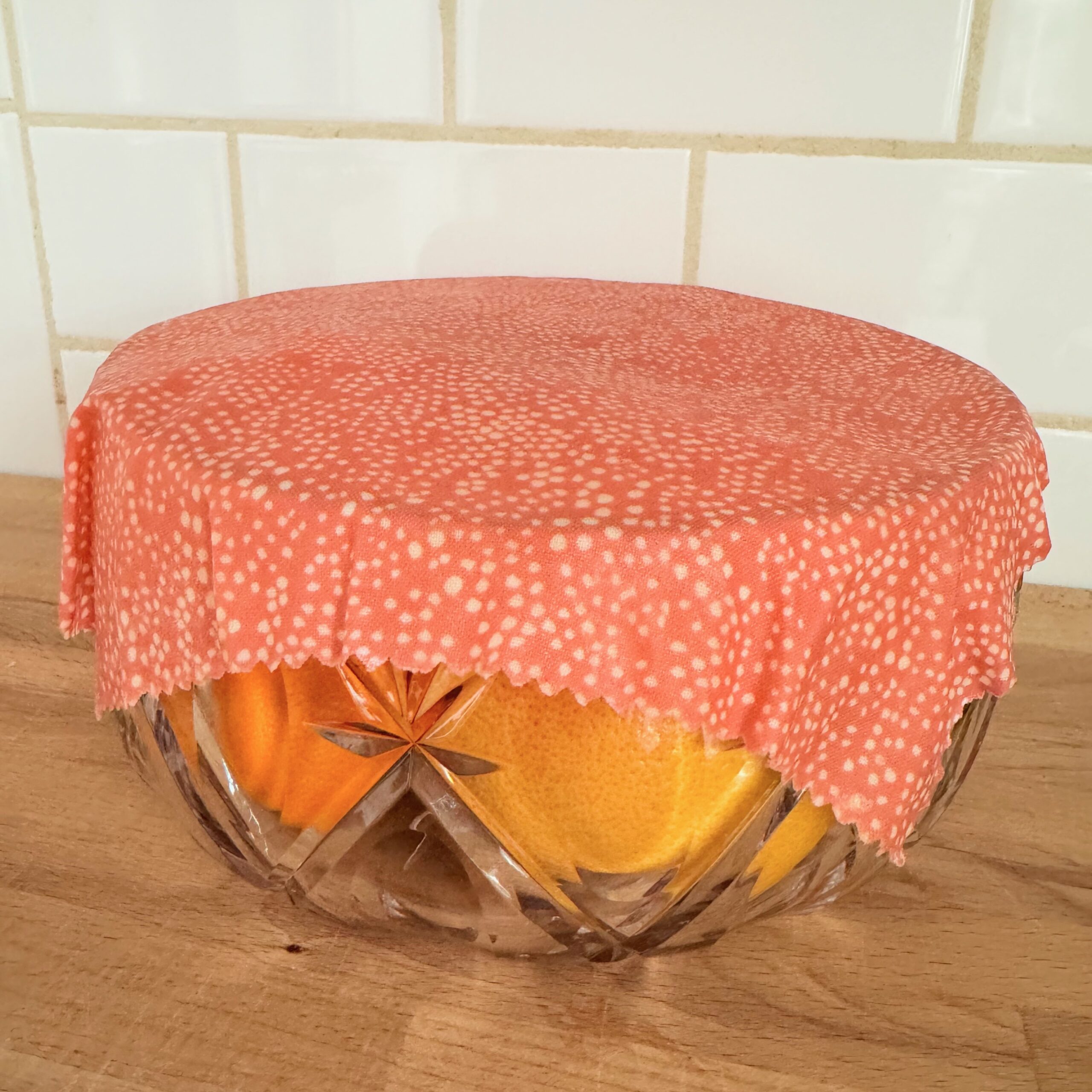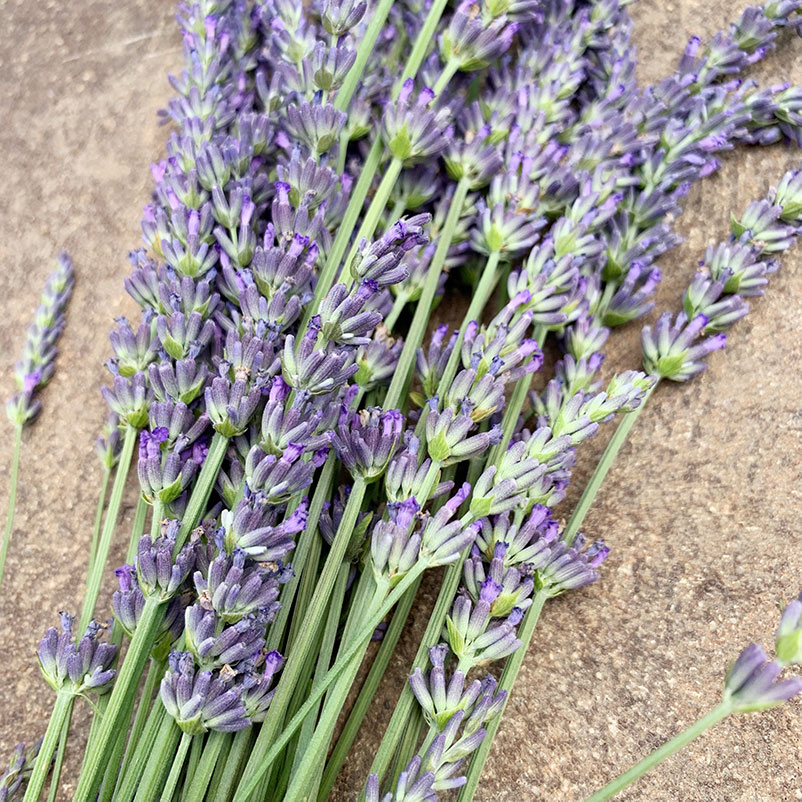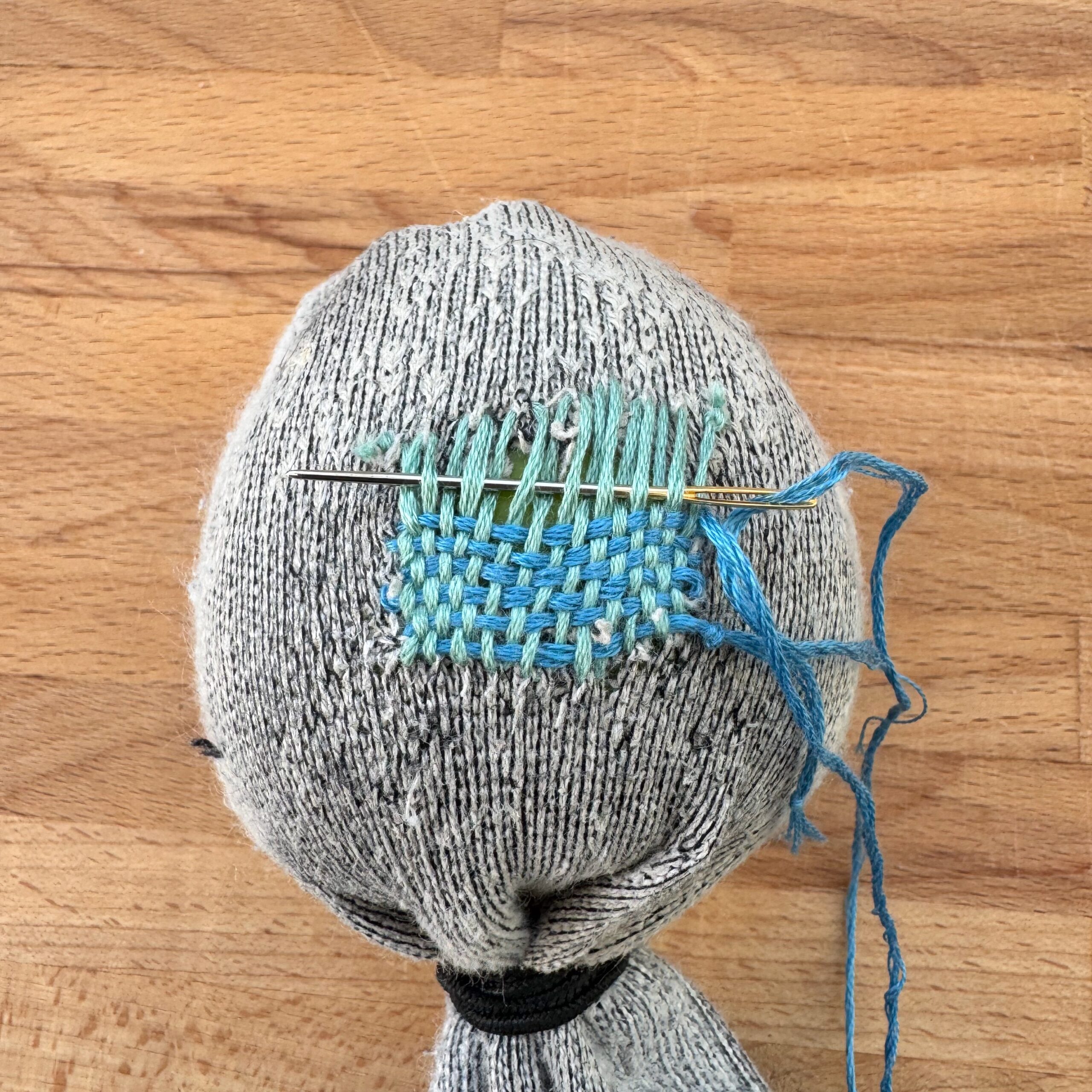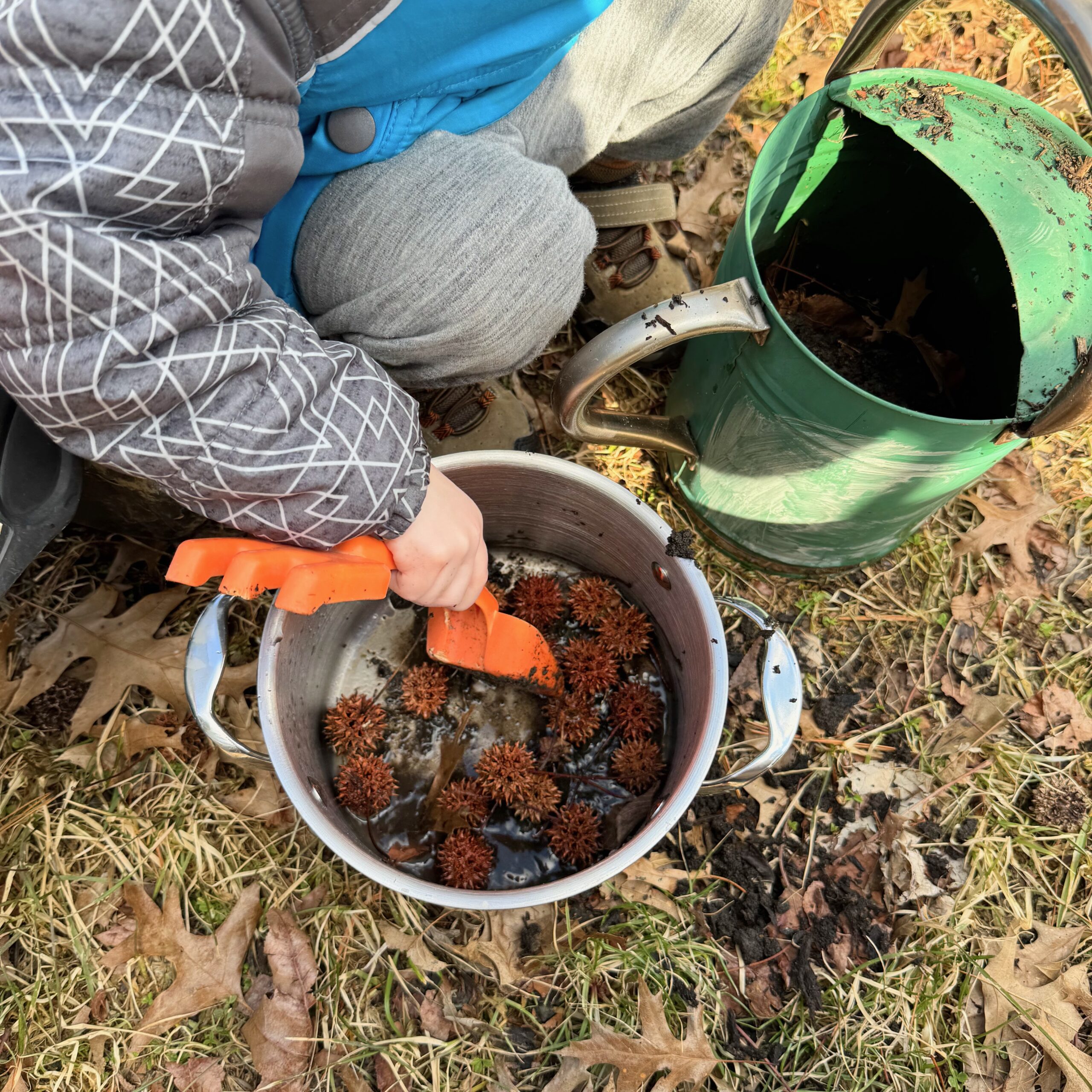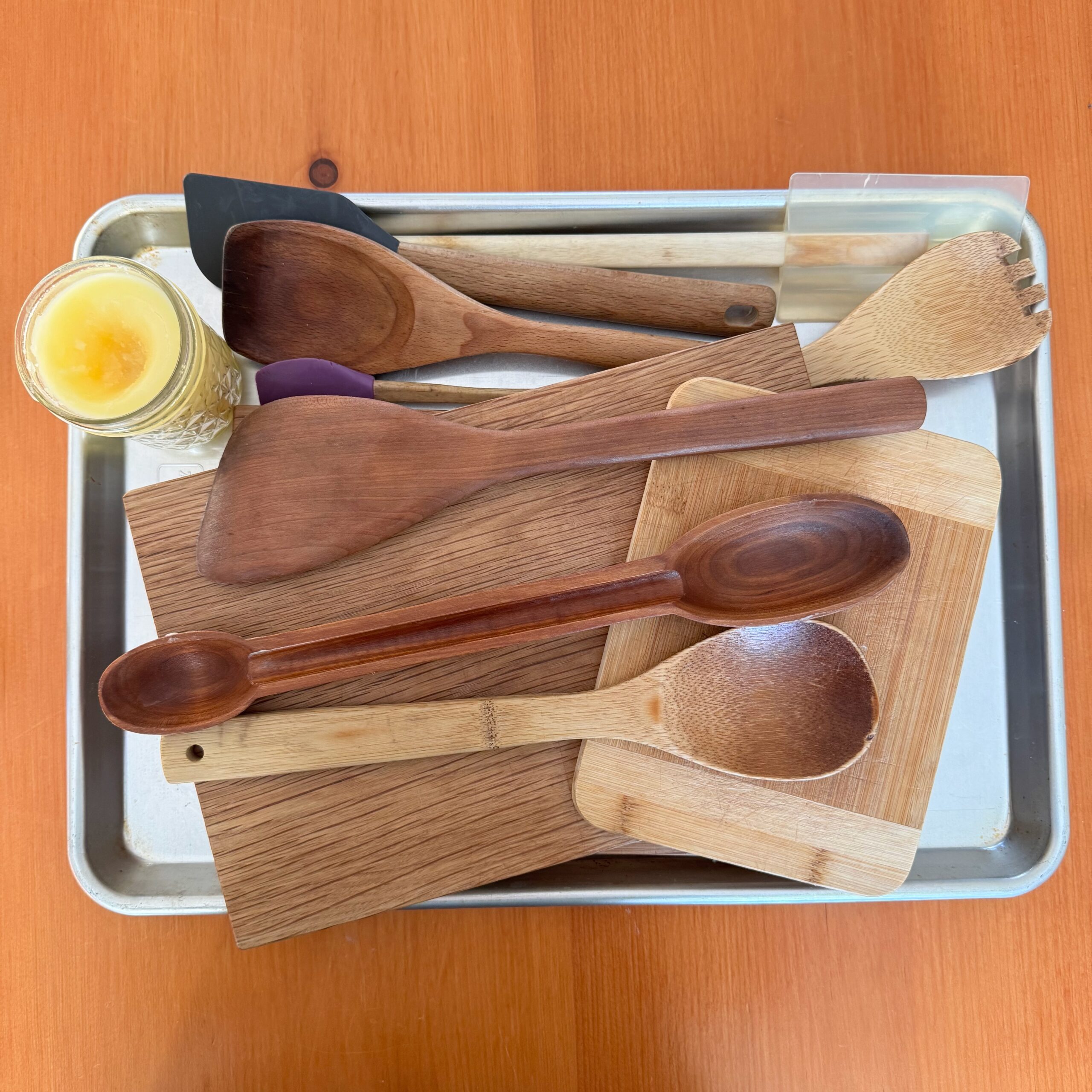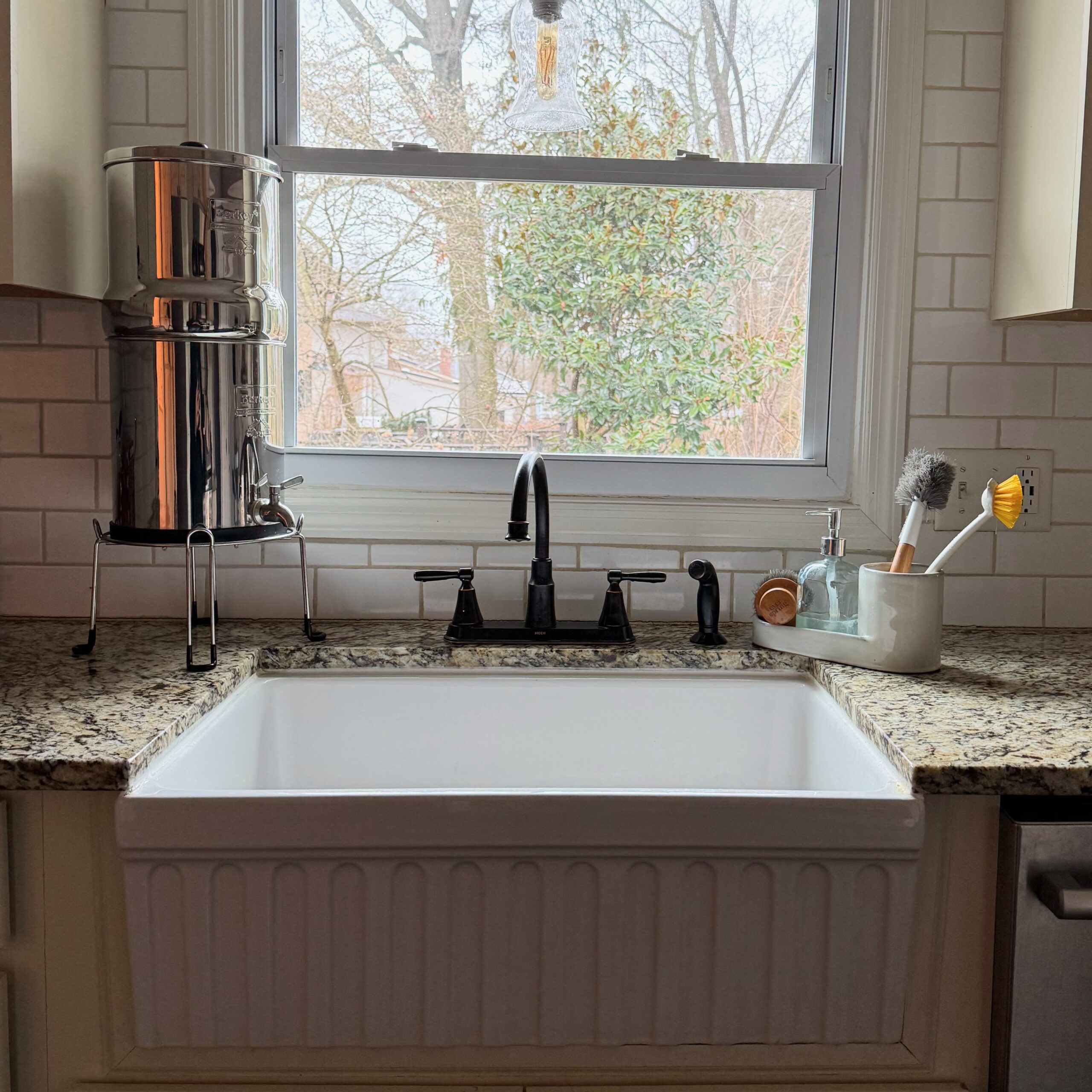Resourceful Seed Starting
Growing Without the Extra Cost
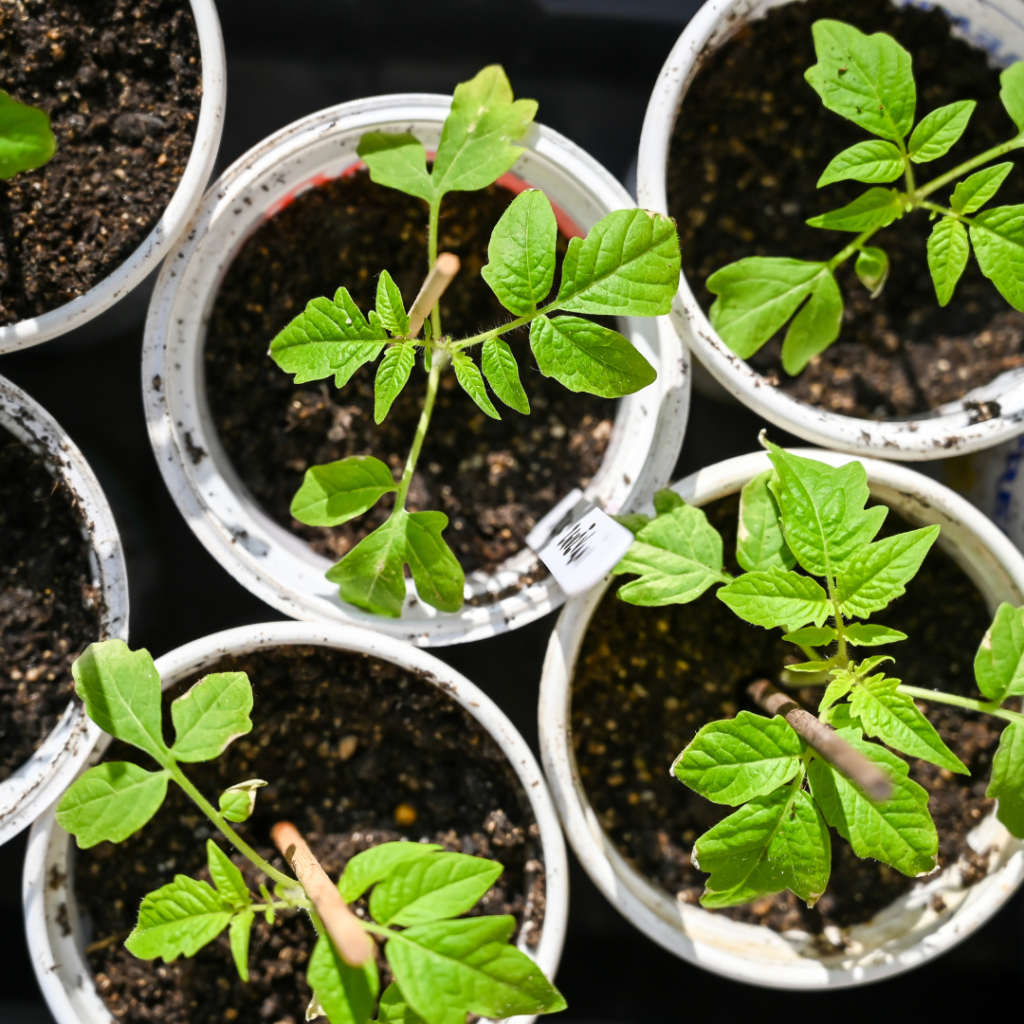
Starting seeds at home is a fantastic way to save money on your garden while getting a head start on the growing season. Many gardeners assume they need to invest in expensive seed trays, grow lights, and specialized seed-starting soil, but you can successfully start seeds using items you already have or can source secondhand. Here’s how to do resourceful seed starting!
Reusing Containers for Seed Trays
You don’t need to buy plastic seed trays to start your plants. Instead, consider these options:
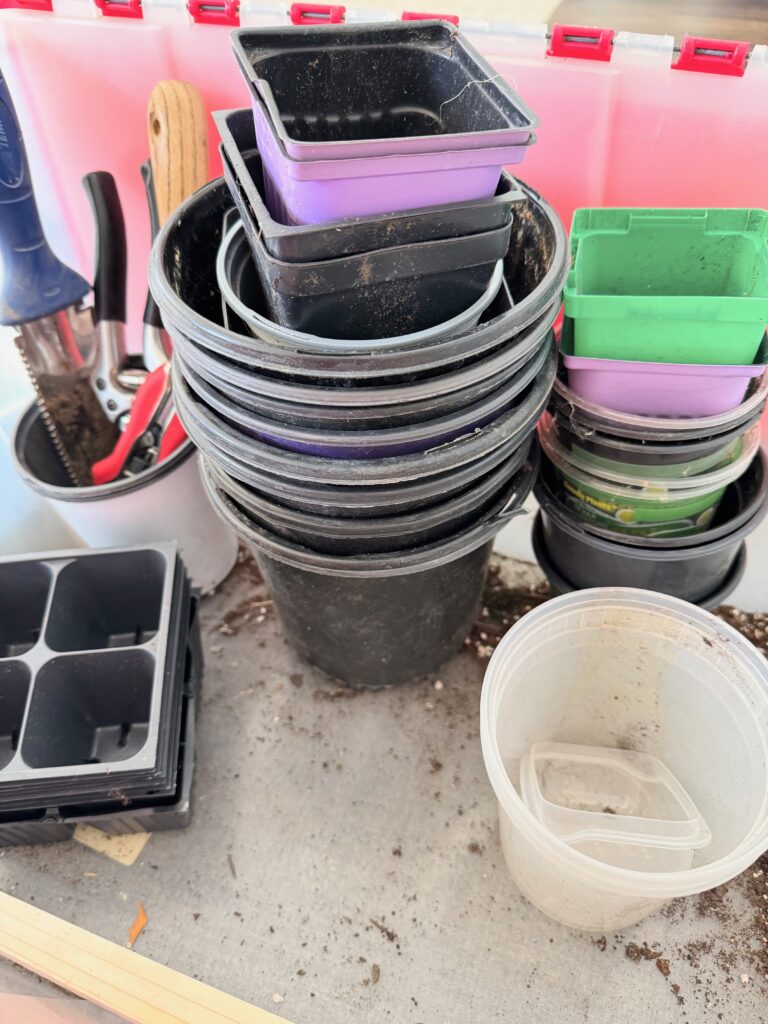
- Old Seed/Plant Trays: Reuse trays from small plants purchased last year. If you don’t have any, check with small gardening stores or browse Facebook Marketplace for free or inexpensive trays.
- Ask your Neighbors: Ask friends or local gardening groups if they have extra trays or pots they no longer need.
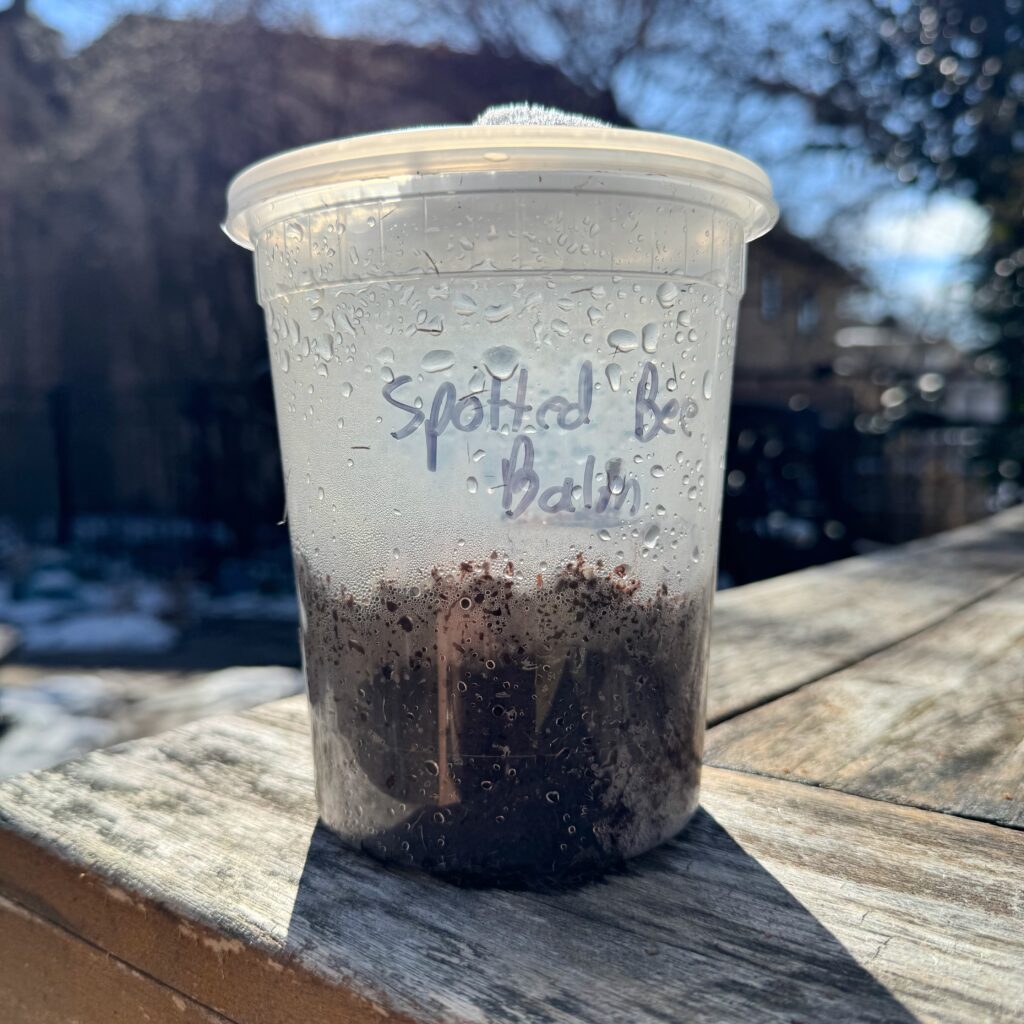
- Reuse Plastic Containers: Repurpose shallow containers like yogurt cups or takeout containers—just be sure to poke drainage holes in the bottom. (Great for winter sowing!)
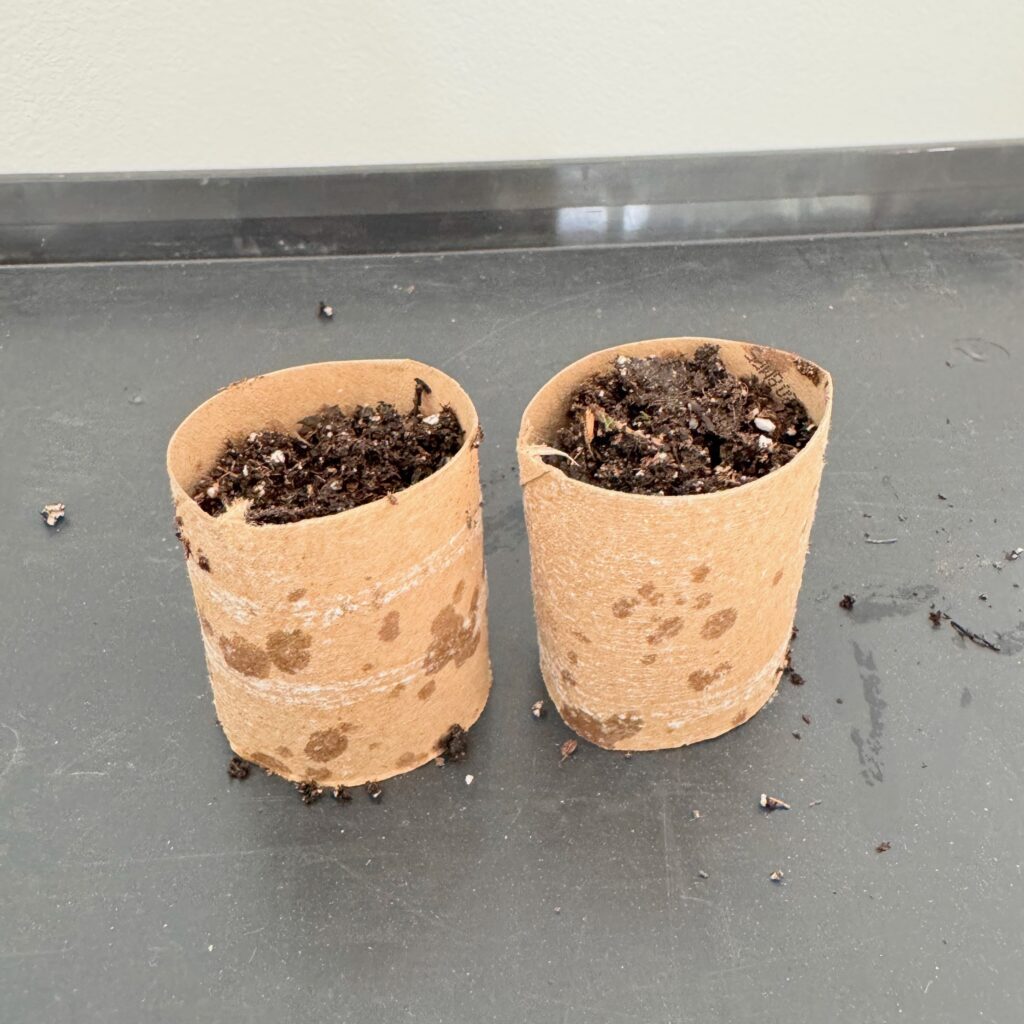
- Reuse Newspaper & Cardboard Tubes: Use paper pots made from newspaper or cardboard tubes, which can be planted directly into the soil when the seedlings are ready.
- Soil Blocking: If you want to avoid plastic and waste, soiling blocking is a great option. If you’re looking to save money, see if you can borrow someone’s soil blocker to start your seeds.
Lighting: Finding Affordable Solutions

Seedlings need plenty of light to grow strong and avoid becoming leggy, but grow lights can be costly. Here are some budget-friendly solutions:
- Grow Lights: Invest in a good-quality grow light secondhand. Check resale platforms like Facebook Marketplace, Craigslist, or local gardening groups.
- Bright Lights: Use a bright LED or fluorescent lamp positioned close to the seedlings for adequate light. Research which lights work best for starting seeds, some don’t provide the correct wavelength of light.
- Sunny Windowsill: If you have an incredibly sunny windowsill, you might be able to grow your seedlings there—but be mindful that even a bright window may not provide enough consistent light for strong growth.
- DIY a Mini Greenhouse: If you aren’t starting something like tomatoes or peppers, which require warm soil for germination, consider DIYing a small greenhouse to put outside to start seeds.
- Amplify Your Light: Consider using a simple reflective surface, like aluminum foil or white cardboard, behind seedlings to maximize available light.
Choosing Soil Without Extra Costs
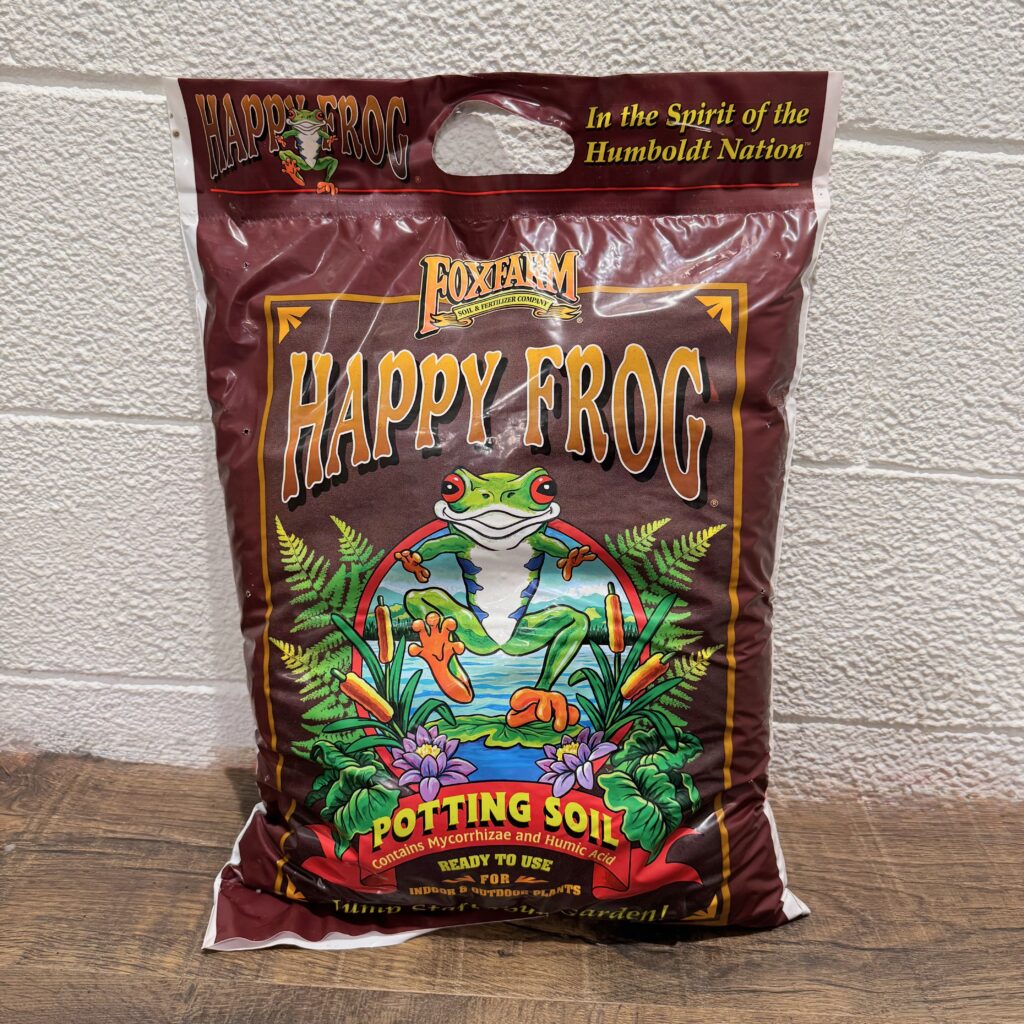
Seed-starting soil is often recommended because it’s light and drains well, but it’s not essential. Instead, try these options:
- Sifted Potting Soil: Use regular potting soil or garden soil, but sift it first to remove any larger pieces like sticks or rocks.
- DIY: Make your own mix by combining compost with fine sand or perlite for improved drainage.
- What to Avoid: Avoid soil straight from your yard unless it’s very fine and loose, as heavy clay or compacted soil can be too dense for seedlings.
Other Resourceful Seed-Starting Tips
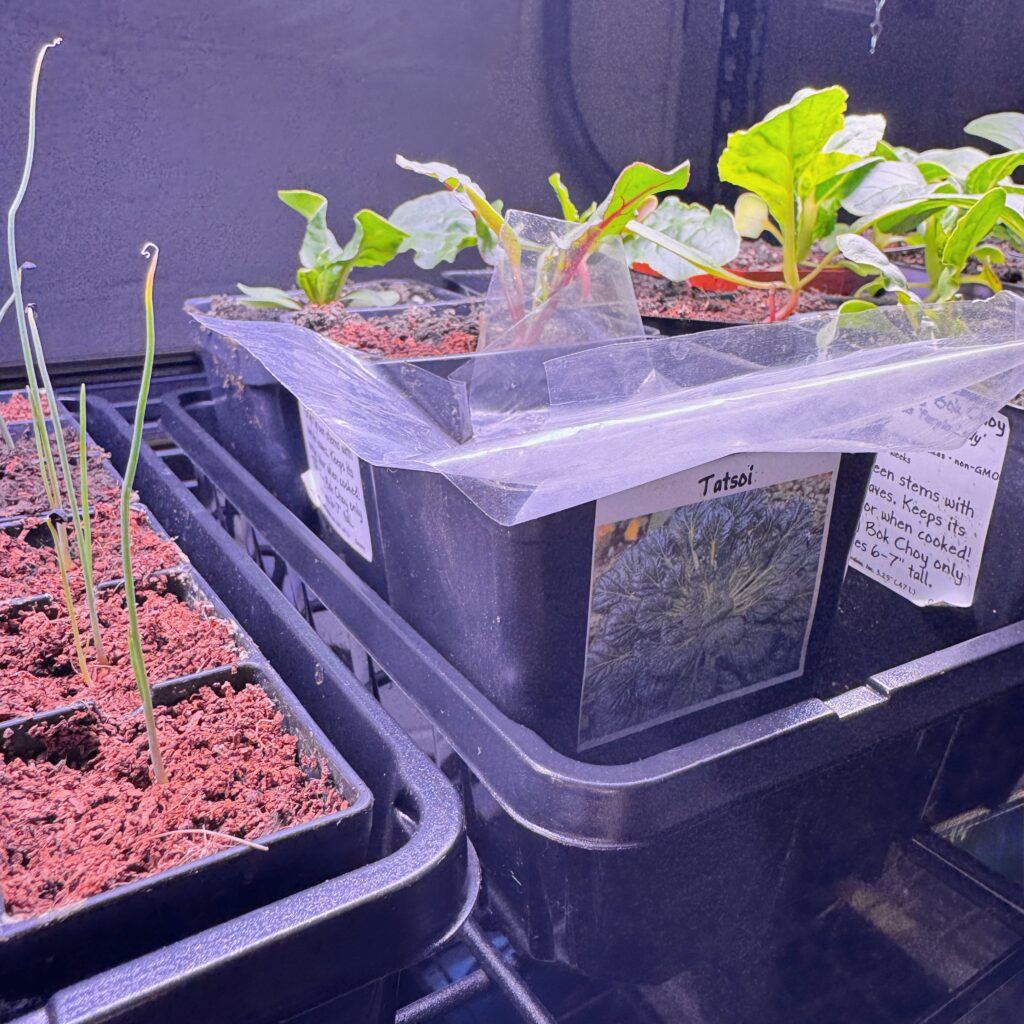
- Humidity Domes: Instead of buying humidity domes, cover your seed trays with plastic wrap, plastic bags cut into a single layer, or repurpose a clear plastic container to create a mini greenhouse.
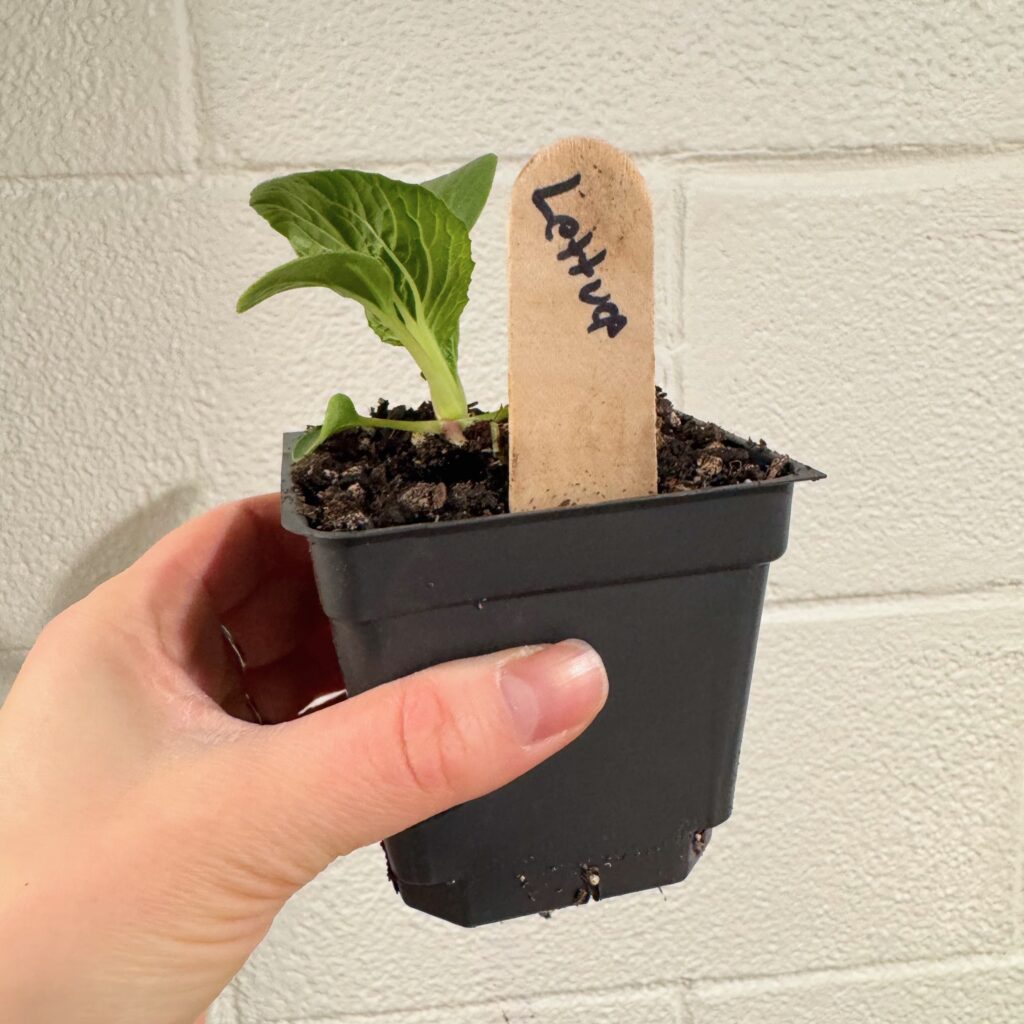
- Plant Labels: Label your seedlings with cut-up yogurt lids, popsicle sticks, or strips of cardboard instead of purchasing plant markers.
- Watering: Water gently using a repurposed spray bottle or a plastic jug with small holes poked in the lid to avoid disturbing delicate seedlings.

- Free Seeds: Save seeds from your own garden or trade with other gardeners instead of purchasing new seed packets every year. (Sorry, yes I did spell Zinnia wrong on my label…)
Beginning Your Own Resourceful Seed Starting Journey
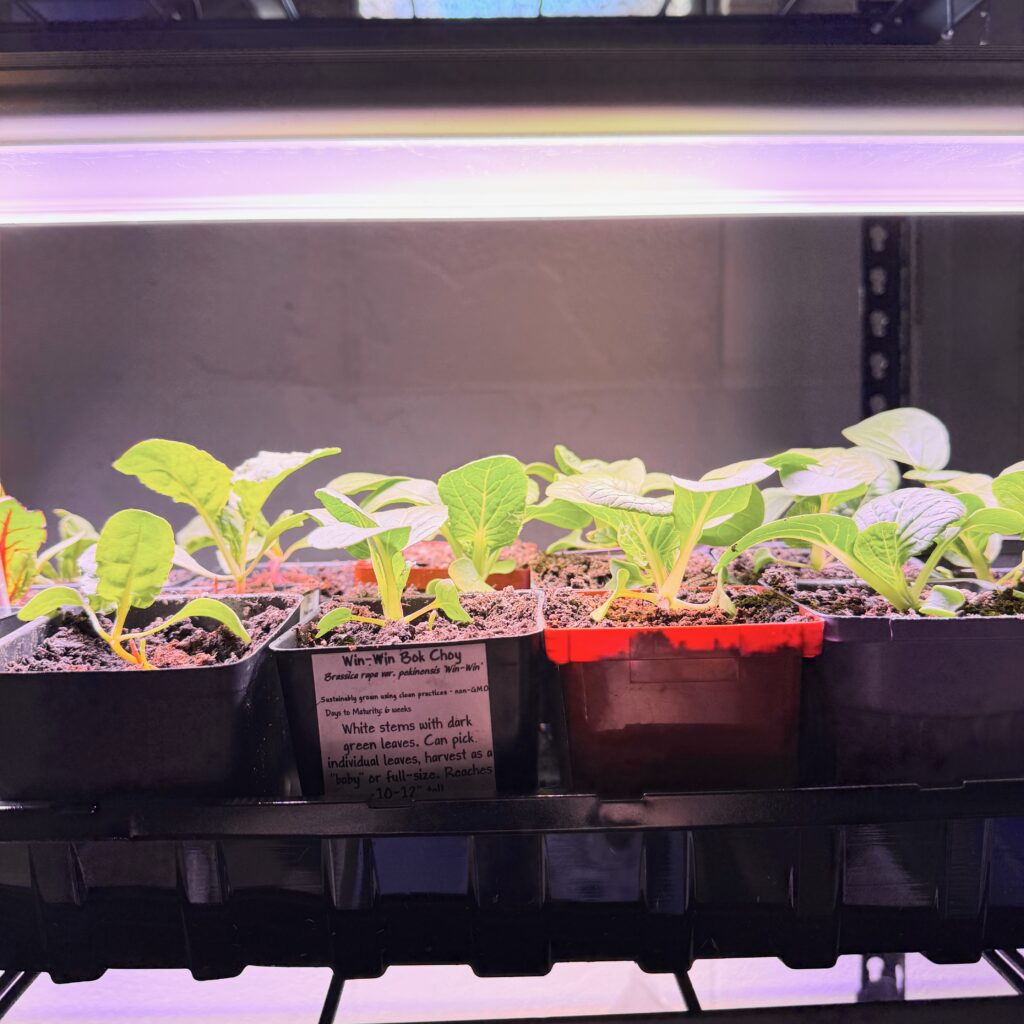
Seed starting doesn’t have to be expensive. With a little creativity and resourcefulness, you can reuse materials, find budget-friendly alternatives, and successfully grow strong seedlings without breaking the bank. By using what you already have, sourcing secondhand items, and making simple swaps, you’ll be well on your way to a thriving, cost-effective garden!
Check out more of my gardening resources here, including my Deer Proof Garden Enclosure, and best ROI Vegetable Plants.
